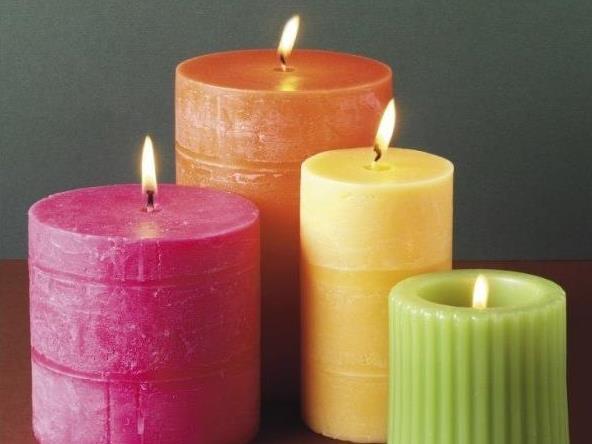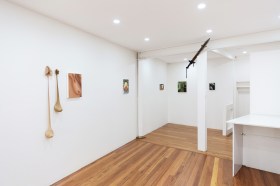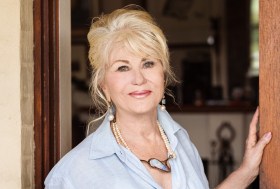With arts funding being slashed by federal and state governments, local artists, musicians and performers continue looking to their supporters for alternative sources of funding.
Since Kickstarter launched here in 2013, crowdfunding has taken off in a big way, with several local and non-profit options entering the market. Australians are among the biggest donors to crowdfunding projects globally, and many creative professionals are jumping aboard the gravy train.
However, crowdfunding is not a matter of popping up a campaign page and waiting for the money to roll in. Successful campaigns take planning and preparation, and are not for the fainthearted. Non-profit Indigenous art gallery Kaiela in regional Victoria used crowdfunding to raise funds for community programs. Gallery manager Angie Russi told ArtsHub ‘It is a labour intensive exercise and is certainly not a replacement for solid government or philanthropic funding. Crowdfunding is only as good as your network of supporters and the crew that you have at the back end driving the campaign. It takes over your life for a month! It is labour intensive.’
We’ve compiled a roundup of the four main players: Kickstarter, Pozible, Indiegogo and social enterprise platform Chuffed.
Kickstarter
The biggest and most popular crowdfunding platform, Kickstarter is aimed at creative projects but has become known for funding everything from tech gadgets to the Veronica Mars movie. Some big names have used Kickstarter to fund their projects, including artist Marina Abramovic and musicians De La Soul and Amanda Palmer. Kickstarter-funded short film Inocente even won an Oscar in 2013.
Despite being the biggest player, Kickstarter doesn’t have a reputation for great customer service or support for campaigners. Plus, your campaign can take up to a few months to be approved, so make sure your campaign meets Kickstarter’s strict criteria before submitting a proposal.
The stats:
35.9% success rate. Over $2.5 billion pledged. Over 108,100 projects launched.
Pros:
- The most popular and recognisable platform, giving more credibility to your cause and increasing your chances of getting media attention.
- Fees are only charged if your target is met.
- Funds are paid out in a single lump sum once you reach your target.
Cons:
- It could be easy to get lost in the crowd of over 300,000 campaigns vying for attention.
- The approval process is stringent and can take months.
- The funding is an all-or-nothing model. If you don’t meet your target, you don’t get to keep any of the money raised.
- Donors must create a login to donate, which could be off-putting for some.
- The company has come under fire for failing to respond to complaints.
Fees: A 5% administration fee applies, plus a credit card fee of 3% and 20 cents. Fees on a $20,000 campaign would be $1,640.
Is it for me? While the site is definitely the largest platform, it isn’t the easiest to use. That said, if your project has broad international appeal, or is THE next big thing, then Kickstarter might be just right.
My advice: “One thing that really worked in our favour was making sure our online store was 100% ready to go live as soon as the campaign finished. We received a heap of press on the last day of our funding period and knew tons of people would be going to our Kickstarter project page only to find that the project had ended,” said Chris Peter, co-founder, Opena.
Read: Can crowdfunding save journalism?
Pozible
Developed in 2010 in Australia, by Australians, for Australian campaigns, Pozible is the second most popular crowdfunding platform in the country.
Like Kickstarter, Pozible uses an all or nothing model of funding. They also have a subscription funding model, so payments can be pledged at regular intervals.
The stats:
57% success rate. Over $45 million pledged. Over 10,950 projects launched.
Pros:
- Melbourne based, although the site has also recently launched throughout Asia.
- Offers comprehensive support for campaigners, including handbooks, workshops and reliable customer service.
- Many options to customise your campaign page and add widgets, add-ons and apps.
- More permissive and faster approval process than Kickstarter.
Cons:
- Smaller platform means less people may view your campaign.
- An all-or-nothing funding model. If you don’t meet your target, you don’t get to keep any of the money raised.
- Donors must create a login to donate.
Fees: A 5% administration fee applies, plus a credit card fee of between 2.4 and 3.4%. Fees on a $20,000 campaign would be $1,540. Fees are only charged if your target is met.
Is it for me? While the site accepts donations from all over the world, over 60% of donors are in Australia. So if your project has an Aussie angle, Pozible might be your best bet.
My advice: ‘Running a Pozible campaign is a lot of work. I had to prepare it and make it look good. Then I promoted it to keep it alive, and once it’s finished there’s the need to follow through with all the people who have been generous,’ said Tasmanian illustrator Rachel Tribout.
Indiegogo
Despite actually launching a year prior to Kickstarter as a crowdfunding platform for independent films, Indiegogo has developed into the catch-all of crowdfunding. In the words of co-founder Slava Rubin, “anyone with passion can raise money for anything.”
Kickstarter – and to a lesser extent, Pozible – both have restrictions on the type of projects they will accept on the platform, but Indiegogo has a much wider criteria, which is both a positive and a negative. You’ll find campaigns for everything from charities to art projects to personal travel, and, er, babies! Yes, really – the first Indiegogo baby was born after his parents ran a successful campaign in 2011 to raise money for fertility treatments.
The stats:
Indiegogo don’t publish their success rate stats, but over $900 million has been raised across 650,000 projects.
Pros:
- Offers both Fixed Funding (all-or-nothing) and Flexible Funding, which means you get to keep all the funds you raise, regardless of your target.
- Indiegogo has a specific program called Generosity which is a fee-free platform for non-profits and social enterprises.
- Good support for campaigners through handbooks and customer service.
- Campaigners can access information about their donors instantly, rather than after the goal is reached.
- Customer support is excellent.
- Requires no approval process or waiting period to launch a campaign.
Cons:
- Donors must create a login to donate.
- A more permissive approval process means there are many more types of campaigns, meaning yours could easily get lost in the mix.
Fees: An administration fee of between 4% and 9% applies, plus a credit card fee of 3%. Fees on a $20,000 campaign would be $1,900.
Is it for me? If your project doesn’t fall within the approval criteria of Pozible or Kickstarter, then give Indigogo a go.
My advice: ‘Be transparent with your pricing; people want to know where their money is going, and why. You need them to trust you,’ said Mel Reiff Hill, author.
Read: Crowdfunding success
Chuffed
Aimed specifically at non-profits, social enterprises and activists, Chuffed itself is also a non-profit. Based in Australia, Chuffed allows campaigns from Australia, the UK, the US and Canada, but most of the campaigns are for Australian causes.
Pros:
- Free for campaigners.
- Keep all the funding you raise, regardless of whether it meets your target.
- Donors don’t need to log in to make donations.
- Tax deductible receipts are automatically issued for Australian DGR charities.
- Offers Team Crowdfunding – allows multiple crowdfunding pages for one main campaign.
Cons:
- Limited to social enterprise or non-profits only – your for-profit business idea won’t be accepted by Chuffed.
- Not as well-known as other platforms.
- Limited capability to customise your campaign page.
Fees: No fees for campaigners. Donors pay between 2% and 2.9%, plus 30 cents, towards processing fees on top of their donation.
Is it for me? If you want to raise money to start an arts program for refugees, fund a loved one’s cancer treatment or pay court costs for an activist group, then Chuffed is for you.
My advice: ‘While there are more traditional ways to raise funds for capital projects, we decided on Chuffed as it was the best way to raise funds quickly as well as actively involve our donors. Other ways of fundraising were very mono-directional, but crowdfunding allowed us to have an intimate relationship with our supporters during and after our campaign,’ said Pam Ahern, of Edgar’s Mission.
Australian Cultural Fund
A government-funded agency charged with stimulating private support of the arts, Creative Partnerships Australia has established the ACF to provide a tax deductible platform which encourages donations to the arts.
Pros:
- Exclusively for Australian artists and arts organisations.
- Allows artists to offer donors tax deductibility.
- It’s not all-or-nothing: artists keep what they raise, even if they miss their target.
- Not for profit
Cons:
- It is relatively small, just passing $2 million for the first time in the 2016 financial year.
- Limited capacity to customise your page
- Participants must have an ABN or have an agreement in place with an auspicing body.
- Artists are required to submit an acquittal with detailed information about how their funds were used and the status of the project.
Fees: There is no fee to register but a 5% fee is deducted from all donations.
Is it for me? If you play exclusively in the Australian space and in the arts, the tax deductibility and keep-whatever-you-get clauses are attractive.
My advice: Donor Alyson Schoer says she likes donating through ACF because the platform is clear and easy to use and because of the quality of the work. ‘I know if they are on the ACF, they are credible and have what it takes to make it happen.‘






